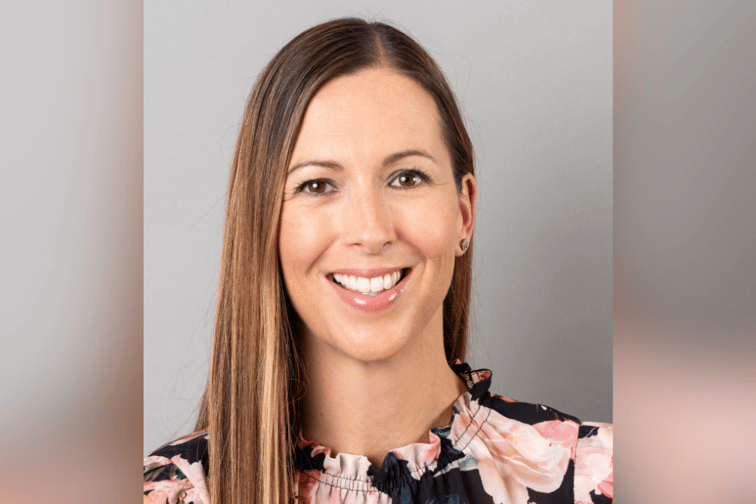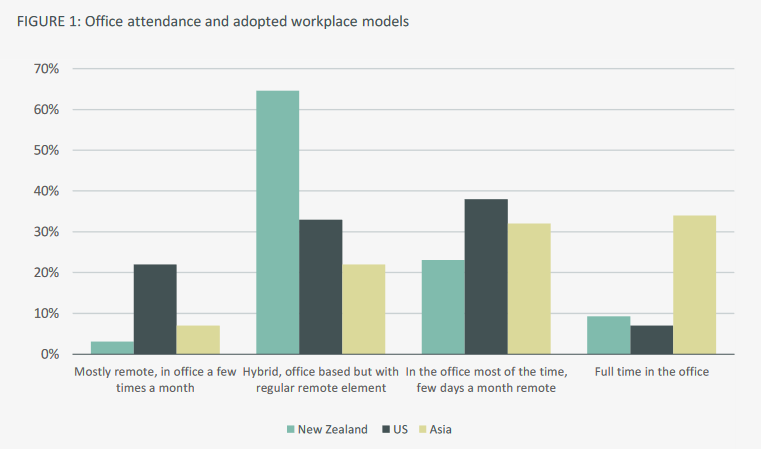

Whoever said the office was dead might have spoken too soon. In New Zealand, it’s been found that the hybrid working model – a good balance between remote work and being office-based – is more widely adopted than in Asia and the US, and here CBRE’s Kirstin Cooper (pictured above) talks about how the Kiwi workplace is changing for industries such as insurance.
Speaking with Insurance Business about the commercial real estate firm’s “New Zealand Office Occupier Sentiment Survey 2023” report, Cooper said: “The overarching objective was to understand what was happening in the New Zealand market, and also because we had so many clients and occupiers asking us, ‘What is everybody else doing?’ So, that was really the driver for the research.
“At a high level, some of the key topics we looked at were things like average number of days in the office, and that was where we saw 3.2 days coming out as the average. And what was interesting in terms of the insurance sector, specifically, is when we looked at the sector analysis, that was where the insurance industry sat, so right at that middle point.”
According to CBRE, office attendance for insurance companies in New Zealand is currently at 3.1 days per week; other professional services firms, 3.6 days.
So, who are spending the most time at their work premises instead of their home offices?
“We definitely had variation at each end of the spectrum,” Cooper pointed out. “So, public sector having lower number of days (2.5) in the office; the legal sector veering towards higher number of days (3.9) in the office. But what we saw reflected for the insurance industry was actually what we were seeing across the board as an average, so following that broader trend that we’re seeing most organisations follow.”
In terms of workplace models, 65% of New Zealand office occupiers have adopted hybrid working. Meanwhile, CBRE’s 2023 occupier survey for the US found that the hybrid model only applies to a third of organisations, with 22% still predominantly remote. In Asia, more are predominantly based in the office.
 Source: CBRE
Source: CBRE
A key change in addition to office attendance, Cooper highlighted, is how the workplace is now being used.
The senior workplace consultant told Insurance Business: “What we have seen across the board is definitely a shift in the purpose of the workplace, and certainly organisations really looking at what we refer to as that ‘flight to quality’.
“So, that onus being on organisations now to really provide that high-quality workplace experience to employees, to attract them back into the office – which, as much as we haven’t had such a big focus on return to office in New Zealand as we have seen in other parts of the world, there are still organisations that are trying to get people back into the office more.
“And then also alongside that, organisations are trying to attract and retain talent. And in industries such as the insurance sector where employees do have the opportunity to potentially move between organisations – maybe go from one competitor to another – organisations really are having to make sure that they are providing the best quality workplace to retain that talent, make sure they’ve got the best people in their organisation.”
A lot of that, Cooper said, literally has to do with how companies make use of the space. Traditionally, employers provided their people with a desk, a few meeting rooms, and a lunch room. Now, a more modern workplace design features a greater variety of spaces.
“We’re seeing organisations bring in more collaborative workspaces,” the former HR manager noted. “We’re seeing them bring in more quiet and focus spaces as well, because we know people need to do both kinds of activities during the day. There are spaces for more connection and socialisation.
“There are, obviously, workstations as well, which are a traditional part of the workplace, but a lot of organisations are shifting away from assigned desks to unassigned seating, because people aren’t in the office every day. So, they want to avoid a lot of desks sitting empty and taking up space in the office that could be used for other things.
“So, a lot of it’s about that high-quality experience, creating the spaces that people need to do the work that they need to do, and really being attractive for people to spend time there.”
As Cooper illustrated, the office is not dead but now looks a bit different, in response to our transformed way of working.
Meanwhile, the office leasing team at CBRE New Zealand told Insurance Business: “We have had feedback from insurance companies that were looking to reduce their footprint post-COVID but paused those plans – and, if anything, have expanded to accommodate claims staff to bolster their teams – as they navigated the Auckland Anniversary floods and Cyclone Gabrielle.”
What do you think about this story? Share your thoughts in the comments below.
